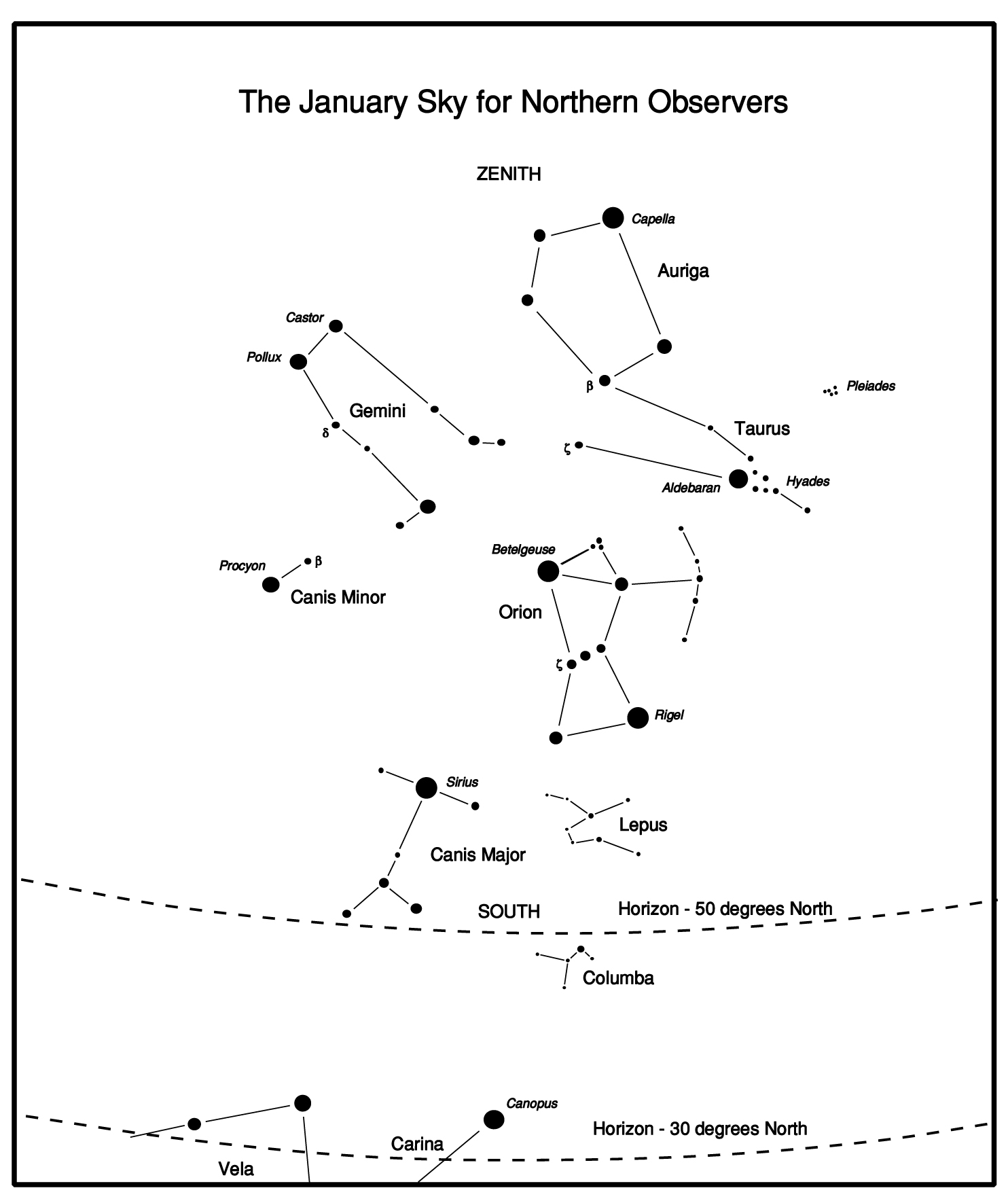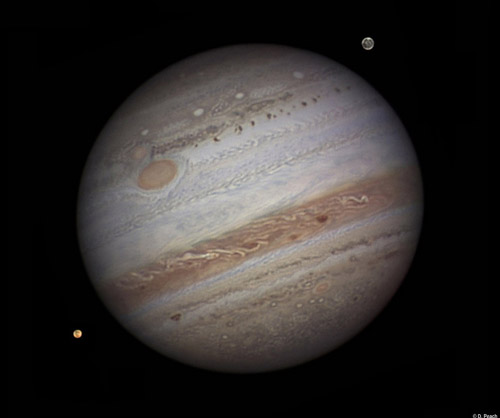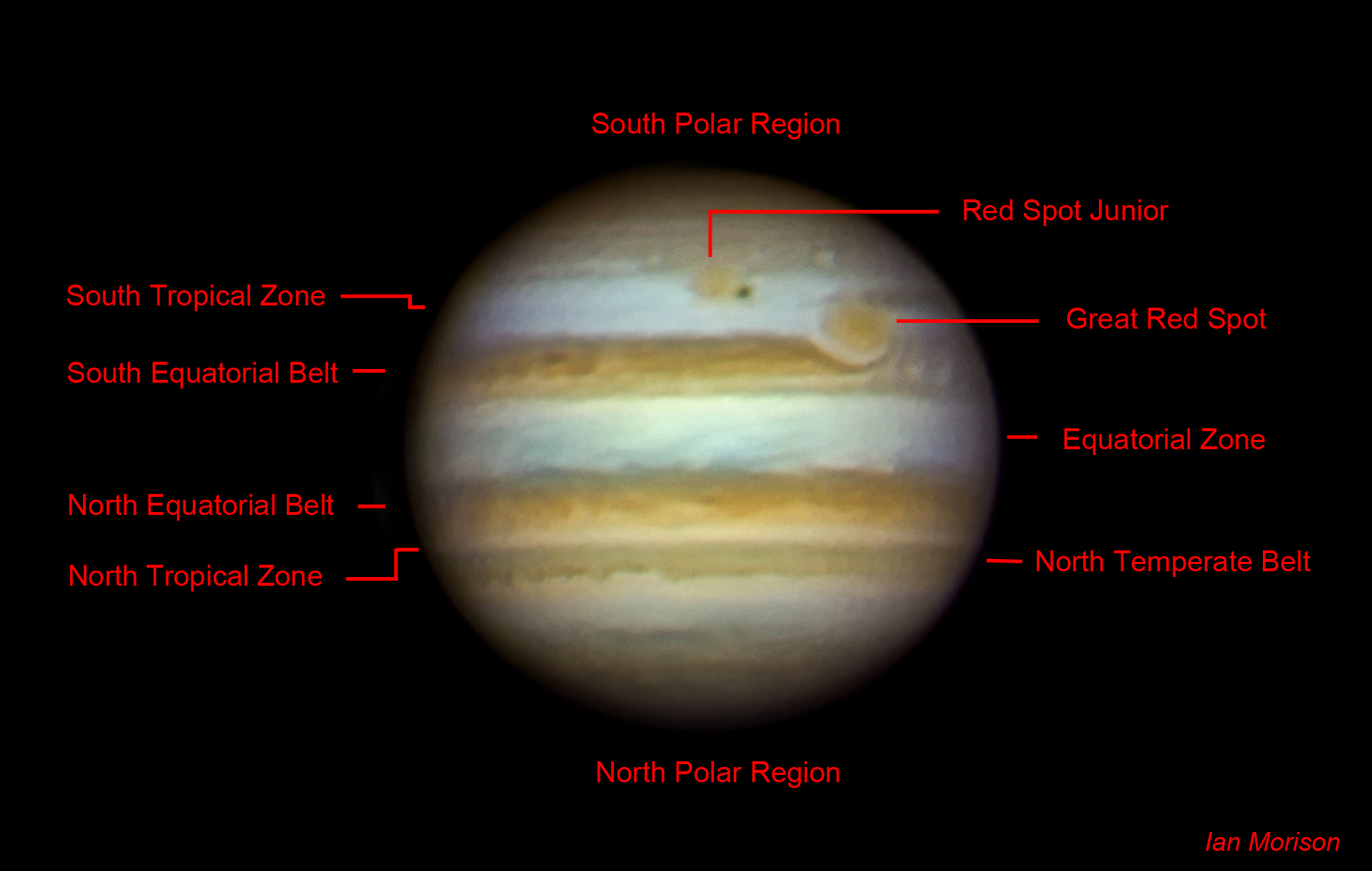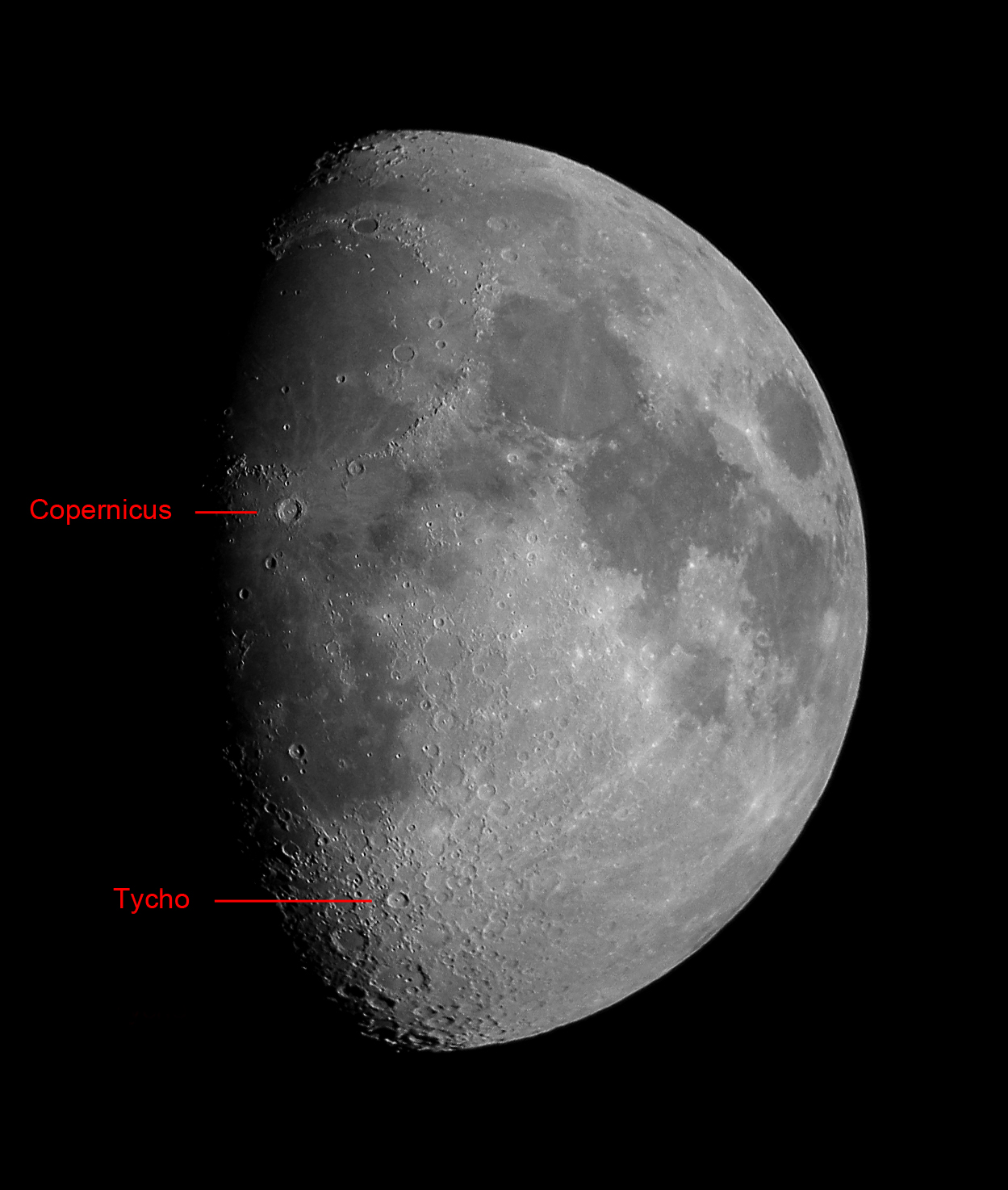
Farewell Enceladus. In the show this time, we talk to Dr. Judith Croston about the radio galaxy population, and we find out what we can see in the January night sky from Ian Morison and Haritina Mogosanu.
Interview with Dr. Judith Croston
Dr Judith Croston is a lecturer at the University of Southampton and is the academic directory for Physical Sciences at the Institute for Continuing Education at Cambridge. Judith's research interests are in radio galaxies - galaxies in which a supermassive black hole launches out large jets producing radio emission. She talks to Therese in detail about these systems, in particular their impact on the environment in which they live, notably their influence on how galaxies grow and form stars. Judith also tells us about a range in fantastic courses she runs in astronomy. These include astronomy days or year long courses leading to a diploma. Read more about what's available Here
The Night Sky
Northern Hemisphere
Ian Morison tells us what we can see in the northern hemisphere night sky during January 2016.
The Stars

In the mid to late evening January sky the brilliant constellation of Orion may be seen in the south. Moving up and to the right - following the line of the three stars of Orion's belt - brings one to Taurus; the head of the bull being outlined by the V-shaped cluster called the Hyades with its eye delineated by the orange red star Aldebaran. Further up to the right lies the Pleiades Cluster. Towards the zenith from Taurus lies the constellation Auriga, whose brightest star Capella will be nearly overhead. To the upper left of Orion lie the heavenly twins, or Gemini, their heads indicated by the two bright stars Castor and Pollux. Down to the lower left of Orion lies the brightest star in the northern sky, Sirius, in the constellation Canis Major. Finally, up and to the left of Sirius is Procyon in Canis Minor.
The Planets
- Jupiter, shining at magnitude -2.2, rises at around 20:30 UT at the beginning of the month lying low in south-eastern Leo. It begins its retrograde motion, moving westwards across the heavens, on January 8th. By the end of the month it rises at around 19:30 UT with a slight increase in magnitude to -2.4. It will then be due south and so highest in the sky at an elevation of 45 degrees around 01:30 UT. As the Earth moves towards Jupiter, the size of Jupiter's disk increases slightly from 39 to 42.4 arc seconds so one should be easily able to see the equatorial bands in the atmosphere, sometimes the Great Red Spot and up to four of the Galilean moons as they weave their way around it.
- Saturn is now a morning object, rising at 06:15 UT as the month begin but by about 04:30 UT at its end. It lies in the southern part of Ophiuchus some 7 degrees up and to the left Antares and close to the stars that mark the head of Scorpius. Its diameter increases from 15.3 to 15.8 arc seconds during the month with its ring system spanning some 35 arc seconds. It will be shining at magnitude +0.5 and be high enough in the south-east before dawn to make out the beautiful ring system which has now opened out to ~25 degrees.
- Mercury on New Year’s Day will shine at magnitude -0.4 about 7 degrees above the south-western horizon 30 minutes after sunset. Binoculars will be probably needed to spot it but please do not use them until after the Sun has set. Over the next week it falls back towards the horizon with a much reducing magnitude (down to +1.8) and will be increasingly difficult to spot. It passes through inferior conjunction with the Sun on January 14th and might be just possible to spot in the east before dawn at the end of the month shining at at magnitude 0.0. At its next inferior conjunction on May 9th it will be seen to transit across the face of the Sun, its first transit for 10 years.
- Mars, moving eastwards relative to the stars, starts the month in Virgo, 6 degrees from Spica, but moves into Libra mid month. Its brightness increases slightly from magnitude +1.3 to +0.8 during the month as the angular size of its disk increases from 5.6 to 6.8 arc seconds. Mars rises about 01:30 on New Year's Day and around half an hour earlier by month's end when it will lie just 1.3 degrees north of the double star Alpha Librae. Given really good seeing, some details on the surface such as Syrtis Major and the polar caps may be visible with a telescope, but will be far better seen at opposition in May when it will appear around three times wider.
- Venus rises around three hours before the Sun as January begins but only 2 hours at month's end. Starting January around one degree from Beta Scorpii, it moves quickly into Sagittarius, passing close to the Trifid Nebula (M20) on the 24th and reaches the handle of the 'teapot' by February. Its angular size reduces from 14.3 to 12.4 arc seconds during the month but, as it does so, the percentage of the disk which is illuminated increases from 77 to 85 percent and the brightness hardly changes, staying at magnitude -4 for much of the month and falling by just 0.1 of a magnitude by month's end.
Highlights of the month
January - a great month to view Jupiter Jupiter now lies in southern Leo, reasonably high in the ecliptic. Hence, when due south it may be seen at an elevation of ~45 degrees.
Jupiter now lies in southern Leo, reasonably high in the ecliptic. Hence, when due south it may be seen at an elevation of ~45 degrees. The Great Red Spot is currently a pale shade of pink, and other features of the Jovian Giant’s atmosphere have also changed significantly over the last few years. See if you can spot any differences between Jupiter now, and these pictures, taken in 2011 and 2012.
The Great Red Spot is currently a pale shade of pink, and other features of the Jovian Giant’s atmosphere have also changed significantly over the last few years. See if you can spot any differences between Jupiter now, and these pictures, taken in 2011 and 2012.
Comet Catalina moves into our northern skies
This month Catalina may reach unaided eye visibility, but the use of binoculars or a small telescope will make for easier viewing. It starts the month just above the bright stars Arcturus in Bootes and tracks northwards until, at mid-month, it passes by the handle of the Plough in Ursa Major. This chart shows its path during January. The smartphone app Sky Safari Plus could help in your search- it will automatically download the orbital elements of comets visible and show exactly where there are to be found.
January 9th
One hour before dawn at magnitude +0.5, Saturn will lie 6 arcminutes from, 60 times brighter, Venus at Magnitude -4 Both have very similar angular diameters at 14 (Venus) and 15 (Saturn) arc seconds. But Saturn will be still noticeably brighter than Antares 7 degrees down to their lower right.
January 19th
After sunset a waxing Gibbous Moon will, if clear, be seen just to the right of the Hyades Cluster in Taurus. During the following evening and night, it will move across the cluster, and by 4am next morning will lie very close to Aldebaran. (As seen from North America a little later, Aldebaran will be occulted.)
January 27th
After sunset a waning gibbous Moon will be seen, if clear, to pass below Jupiter as it lies in the southern part of Leo. At their closest, about midnight, they will lie 4 moon diameters apart.
The Moon
January 18th: The Two Great Lunar Craters Tycho and Copernicus are two of the greatest craters on the Moon, and this is a great night to spot them, with the terminator nearby. Tycho is towards the bottom of Moon in a densely cratered area called the Southern Lunar Highlands. It is a relatively young crater, about 108 million years old, and is thought to have been formed by the impact of one of the remnants of an asteroid that gave rise to the asteroid Baptistina. Another asteroid originating from the same breakup may well have caused the Chicxulub crater 65 million years ago. It has a diameter of 85 km and is nearly 5 km deep. At full Moon the rays of material that were ejected when it was formed can be see arcing across the surface. Copernicus is about 800 million years old and lies in the eastern Oceanus Procellarum beyond the end of the Apennine Mountains. It is 93 km wide and nearly 4 km deep and is a classic "terraced" crater. Both can be seen with binoculars.
Tycho and Copernicus are two of the greatest craters on the Moon, and this is a great night to spot them, with the terminator nearby. Tycho is towards the bottom of Moon in a densely cratered area called the Southern Lunar Highlands. It is a relatively young crater, about 108 million years old, and is thought to have been formed by the impact of one of the remnants of an asteroid that gave rise to the asteroid Baptistina. Another asteroid originating from the same breakup may well have caused the Chicxulub crater 65 million years ago. It has a diameter of 85 km and is nearly 5 km deep. At full Moon the rays of material that were ejected when it was formed can be see arcing across the surface. Copernicus is about 800 million years old and lies in the eastern Oceanus Procellarum beyond the end of the Apennine Mountains. It is 93 km wide and nearly 4 km deep and is a classic "terraced" crater. Both can be seen with binoculars.
Southern Hemisphere
Haritina Mogosanu from the Carter Observatory in New Zealand tells us about the southern hemisphere night sky during January 2016. In this month's Night Sky South, the music you will hear was very kindly provided by brilliant New Zealand composer Rhian Sheehan, who among other projects has produced music for over a dozen UK and US produced Planetarium films.
The Milky way, which is the proud and joy of the Southern Hemisphere compared to the month of July, is now almost hidden from our sight. The Milky Way is in the eastern sky, brightest in the southeast toward Crux. It can be traced towards the north but becomes faint below Orion. Binoculars show many star clusters and a few glowing gas clouds in the Milky Way, particularly in the Carina region. The Milky Way is faint left, or north, of Orion because we are looking toward its thin outer edge. 180 degrees, on the opposite side of ORion, the milky center of our galaxy now lays behind the Sun. the regions in Scorpius and Sagittarius,which hold the galactic bulge are hidden in the solar haze. This is the zenith of summertime.
This time of the year, Tamanui Te Ra (the Sun) travels high in the sky with his summer wife, Hine Raumati. At dusk, his winter wife Hine Takurua (Sirius) rests lonely in the Eastern Sky. Shining as the brightest star, throughout the night Takurua-Sirius is slowly climbing into darkness longing for her husband. With her, standing higher than any of the shining ones, is radiant Atutahi (Canopus).
Canopus, luminous and distant is the second brightest star of the sky. Circumpolar star, he always can 'see' all the others, which make him a great chief of stars, Te Ariki I Tonga I Tarewa/Ke Ali'i o Kona I Kalewa: The Chief Risen in the South. Left of Takurua-Sirius as the sky darkens is Tautoru: The Three Resting (Orion's Belt) Alnilam, Alnitak and Mintaka, the latter one positioned exactly on the celestial equator. Mintaka is the star that always rises exactly due East and sets due West. Below Tautoru, Putara-Betelgeuse shines red giant glimmers. Above Tautoru, Puanga-Rigel is glistening in blue. To Kiwis, Tautoru also makes the bottom of 'The Pot'.
Tawhiti the bird catcher draws a line from Takurua across Tautoru to Taumata Kuku: The Wood Pigeon's Mountain Peak (the Hyades star cluster) to signal it's the time when pigeons are good to eat. At the bottom of the Mountain Peak bright Matakaheru-Aldebaran, visually on the line of sight is half the cluster's distance. Left again, towards north and lower, Te Tawhiti - the Shining Ones (the Pleiades star cluster) forms the noose of the bird catcher. Opposite and low in the south is Te Punga: The Anchor (Southern Cross). Its Pointers, Beta and Alpha Centauri are the rope of the anchor. Alpha Centauri is the closest naked-eye star, 4.3 light years away. The flounder, Te Rua Patiki (the pit of patiki) hides in the coalsack, nestled in Te Punga.
The brightest stars sparkle like diamonds in the sky here in New Zealand. This time of the year, in any clear night, one can see Sirius, the Dog Star, the brightest star in the sky, Canopus, the Cat Star, the second brightest star in the sky and Alpha Centauri, the third brightest star in the sky. Alpha centauri is also our closest neighbour. Facing south, after nightfall from left to right, arched high across the sky are Canopus, the Large Magellanic Cloud and the Small Magellanic cloud. More bright objects are in the morning sky or the late night. Jupiter rises due east before 1 a.m. at the beginning of the month. It is a very bright golden 'star' shining with a steady light. By the end of January Jupiter will be up after 10:30. The disk of Jupiter is seen in a small telescope with its four 'Galilean' moons lined up on each side like stars, changing positions from night to night. It is 720 million km away mid-month.
PlanetsBrilliant Venus rises after 3:30 a.m. through the month; up about 2½ hours before the sun. It is the brightest 'star' in the sky by far. At the beginning of the month Saturn is below and right of Venus, looking like a bright creamy-white star. Around January 9-10 Saturn will make a close pairing with Venus, a conjunction as it passes the brighter planet. Mars is midway between Jupiter and Saturn, a medium brightness orange 'star'.
Deep Skythe open star cluster NGC 2244, or the rosette nebula in Monoceros, will be well placed for observation. It will reach its highest point in the sky in Wellington around midnight local time but will be visible all night. Look for the bright red giant Betelgeuse and then search to the right for the elusive Monoceros, the Unicorn. Monoceros is hard to see with the naked eye, as it only has a few fourth magnitude stars. Inside it, Beta Monocerotis is an impressive triple star system, forming a triangle described by William Herschel who discovered it in 1781 and described it to be "one of the most beautiful sights in the heavens".
A few great Messier targets are the spectacular M42 in the sword of Orion, a place where stars are born, M1, the Crab Nebula and Messier 35 at the foot of the divine twin, Pollux.
47 tucanae globular cluster is high in the sky, located in the birdy constellation of the Toucan. 47 Tucanae (NGC 104) or just 47 Tuc is about 16,700 light years away from Earth, and 120 light years across. It can be seen with the naked eye, with a visual apparent magnitude of 4.9 and under a very dark sky like we have here in New Zealand it can appear roughly the size of the full moon in the sky. For those who like spiders, Tarantula nebula is another breathtaking sight but it takes patience to see it looking with your eye through a telescope.
May you enjoy the beginning of another happy rotation around the sun!
Odds and Ends
In an update to a story originally mentioned in the June 2015 edition of the Jodcast, the Hawaii State Supreme Court voided the building permit for the construction of the Thirty Meter Telescope (TMT) on Mauna Kea in a ruling made on 2 December 2015. The construction of the telescope had faced protests during the past year, mainly from people who have identified the summit of Mauna Kea as a location of Hawaiian cultural and spiritual importance. However, multiple other historical and cultural issues as well as previous conflicts between astronomers and both environmentalists and Hawaiian rights activists are also involved. The building permit was voided because the Bureau of Land and Natural Resources issued the permit before holding a contest case hearing, thus violating its own procedures for issuing permits. At this point in time, it is not clear what will happen to the TMT, but the procedure to reapply for the building permit could take months or years. The local press in Hawaii has had the best coverage on these events. The news on the voided permit is covered in a 3 December news article from the Hawaii Tribune-Herald, and a later article reported on the removal of construction equipment from the site.
Cassini has made its final visit to the enigmatic Enceladus. Flying by at 5000 km above the surface on December 19th, the probe returned the last of its beautiful close-ups of this strange little world. Regions of the fractured young surface were captured in the same images as a much older, cratered region separated by a linear ridge reminding us that Enceladus is not tectonically dead but dynamic and active. Some truly stunning images of the watery plumes were taken as Cassini was approaching the moon clearly showing how high above the surface they emanate, feeding Saturn's outer rings. It's sad that we might not see any more close-ups in the near future but take a look through the images of Enceladus on ciclops.org and see what this little robot has acheived. Cassini hasn't seen the last of Enceladus though. This March, Enceladus will occult a star allowing Cassini to measure the composition and velocities of the plumes before moving on to look for plume activity on Dione using the same method.
Two photographers have created a beautiful timelapse of radio telescopes from all over the world. The video called Dishdance was made by Gavin Heffernan and Harun Mehmedinovic and shows telescopes (mainly Green Bank and VLA) going about their business against backdrops of the most amazing skies. Our very own Mike Peel has made some timelapses of his own of our telescopes. This one of the Lovell telescope and this one of the 25m Mark II telescope.
Show Credits
| Interview: | Dr. Judith Croston and Therese Cantwell |
| Night sky: | Ian Morison and Haritina Mogosanu |
| Music by: | Rhian Sheehan |
| Presenters: | Benjamin Shaw and George Bendo |
| Editors: | Benjamin Shaw and Charlie Walker |
| Segment Voice: | Kerry Hebden |
| Website: | Benjamin Shaw, Alan Gilmore, Toa Waaka and Stuart Lowe |
| Producer: | Benjamin Shaw |
| Cover art: | Athena (left) fighting Enceladus (inscribed retrograde) CREDIT: Wikimedia Commons |